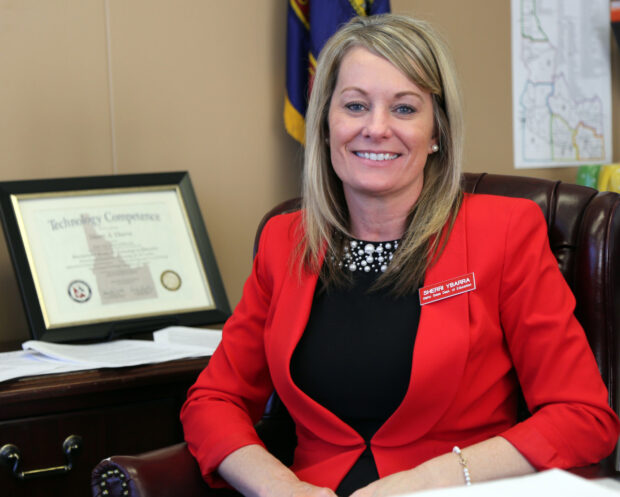This week Idaho schools chief Sherri Ybarra and her staff released what they described as the final draft of the state’s plan to comply with the federal Every Student Succeeds Act.

The 84-page plan represents Idaho’s application for $83 million in annual federal funding. The plan also includes the state’s goals for education, policies for implementing nine federal programs and a school accountability system.
The school accountability system is notable in itself because Idaho has not had an official school accountability plan in place since policymakers repealed the controversial five star rating system in 2014.
The latest version of the plan is different than previous versions, in part because it lowers the sample size of students needed for federal reporting purposes. Those sample sizes affect which schools may be identified as low-performing and, in turn, be eligible for a boost in federal funds designed to help schools get back on track.
The student group and subgroup samples sizes, which are officially referred to as “N-sizes,” were a point of debate among educators and policymakers this summer.
Advocates for lowering the sample size argued that if the sample size were too large, fewer schools would be subject to federal accountability provisions. They also worried that a larger sample size could lead to some student subgroups slipping through the cracks and being unintentionally ignored.
The newest version of the plan lowers the sample size for all students from 25 down to 20, and lowers the sample size for subgroups from 25 to 10. Schools with student populations lower than the new limits will still be exempt from being identified to the feds as low-performing schools.
The new plan also attempts to strike a compromise when it comes to long-term goals for students, students with disabilities and English language learners. Ybarra and her staff lowered some of the benchmarks after state Rep. Ryan Kerby and some educators argued that setting achievement goals too high would be unrealistic and risk alienating teachers and administrators who are tasked with helping students reach the goals.
Ybarra faces a Sept. 18 deadline to submit the completed ESSA plan to the U.S. Department of Education. But, before that can happen, she must win support locally.
“We will be presenting the final draft of the plan for consideration and a vote of approval by the State Board of Education at their meeting in August,” said Karlynn Laraway, the State Department of Education’s director of assessment and accountability. “Once that occurs, the plan will go to Gov. Otter for his review.”
Earlier this summer, the leaders of several education groups and even some prominent state legislators said they felt like they were out-of-the-loop on the ESSA plan. That led State Board of Education member Debbie Critchfield to quickly organize a series of detailed meetings devoted to the plan and collecting public feedback. At about that same time, legislators called a rare summer joint session of the House and Senate education committees in order to bring lawmakers up to speed.
Laraway said those meetings sparked a meaningful public dialogue over the ESSA plan and produced feedback that helped shape the latest version of the state plan.
“We are wrapping up our public comment period, although I don’t think the public comment period ever ends for a plan like this,” Laraway said. “Ongoing stakeholder engagement from our community and from our educators after this plan is finalized, once it as gotten the seal of approval and we are implementing it, is necessary.”
The plan is available to read online via the State Department of Education’s Website.
For more information on the ESSA plan and why it matters to parents and taxpayers, check out this week’s edition of the Extra Credit podcast, which features Laraway as a special guest.
